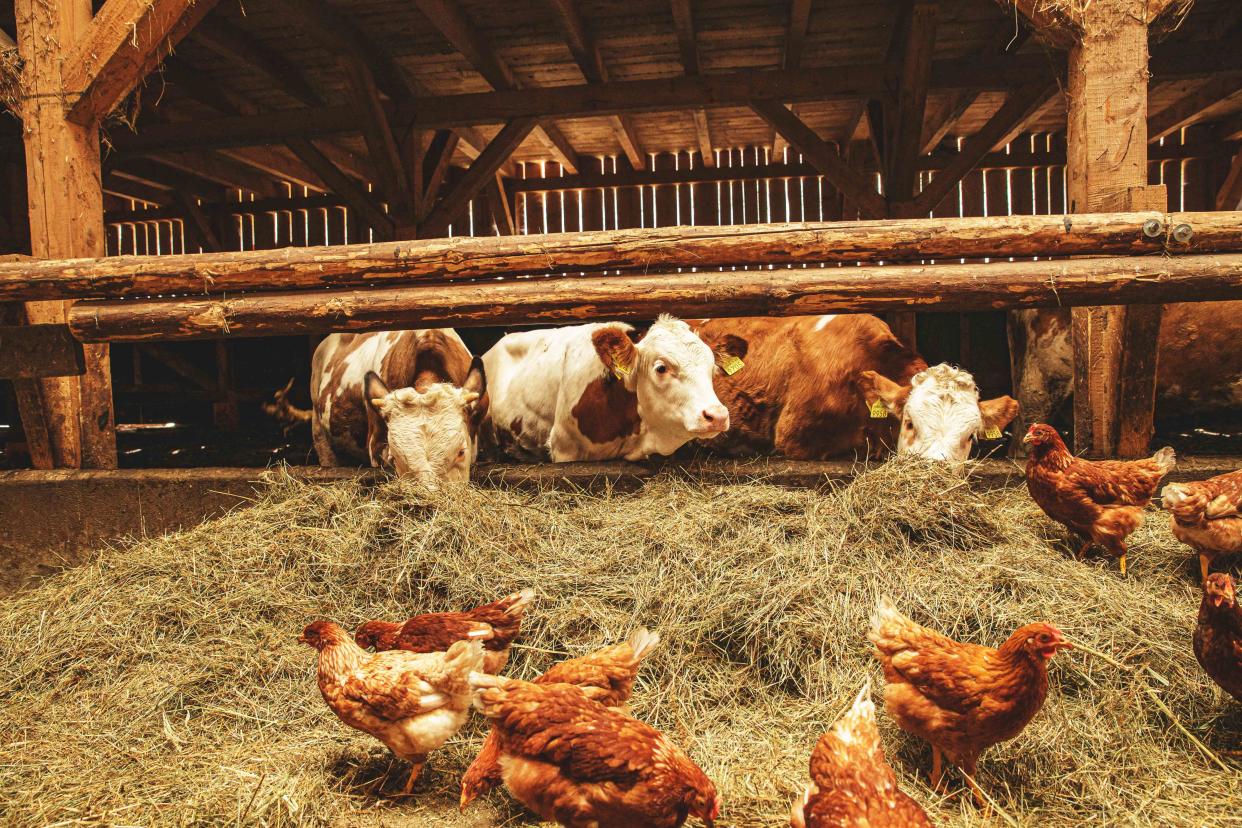Bird Flu Still 'Several Mutations' Away From Infecting Many Humans, Experts Say

grafvision / Getty Images
Fact checked by Nick Blackmer
Key Takeaways
A person in Texas contracted bird flu after having close contact with dairy cattle.
This is only the second known bird flu case in humans in the U.S.
Doctors say that people shouldn’t panic.
Health officials in Texas say that a person in the state was infected with bird flu after coming into contact with dairy cattle that are “presumed” to have the virus.
The patient’s primary symptom was conjunctivitis. They are now taking the antiviral drug oseltamivir, which is also used to treat other flu viruses. Health officials said in a press release that the case “does not change the risk for the general public, which remains low.”
This is the second human case of bird flu in the U.S. and the first that is linked to cows.
Prolonged Contact With Animals Is Necessary for Human Infection
Bird flu, which is also known as avian flu, is a type of influenza A virus that usually doesn’t infect people. However, this has happened before.
“There have been a number of cases of avian influenza in humans across the globe, but only a couple of cases here in the U.S.,” Thomas Russo, MD, professor and chief of infectious disease at the University at Buffalo in New York, told Verywell. “Individuals who have acquired avian influenza have had close and prolonged contact with infected animals.”
These bird flu illnesses in people have ranged in severity from people who have no symptoms to some having a severe illness that led to death, according to the Centers for Disease Control and Prevention (CDC).
There are different types of bird flu. Asian lineage H7N9 and Asian lineage H5N1 have caused the most human illnesses from bird flu viruses around the world.
How Does Bird Flu Spread?
Infected birds usually shed the bird flu virus through their saliva, mucus, and poop. People can then get infected if the virus gets into their eyes, mouth, or nose, such as via inhalation. Most human infections that have happened occur after someone has unprotected contact with infected birds or touches surfaces that are contaminated with bird flu viruses.
Other animals, including pigs, horses, and cows, can also contract bird flu viruses.
It is rare for bird flu viruses to spread from an infected person to another person. However, the CDC noted that it has happened before—it’s just only spread to a few people.
“There’s no evidence at the moment that this virus has the genetic capacity to spread widely and readily from person to person,” William Schaffner, MD, an infectious disease specialist and professor at the Vanderbilt University School of Medicine, told Verywell.
Bird Flu Symptoms
There’s been a range of symptoms reported in people who have had bird flu, including:
Eye redness (aka conjunctivitis)
Mild, flu-like upper respiratory symptoms
Fever or feeling feverish
Cough
Sore throat
Runny or stuffy nose
Muscle or body aches
Headaches
Fatigue
Shortness of breath or trouble breathing
It’s less common, but someone with bird flu may also experience diarrhea, nausea, vomiting, or seizures.
The latest bird flu patient had conjunctivitis, which Russo said can happen.
“Symptoms are usually more respiratory, but infectious particles can cause infections when they get into the body, including the eyes,” he said.
Related: Symptoms of Bird Flu
How Common Is Bird Flu in Humans?
Doctors stress that bird flu is not common in humans at all. The latest case is only the second bird flu case detected in humans in the U.S.
“This is more common in other parts of the world where people in rural areas live very close with their poultry, but even then it’s rare,” Schaffner said. “There is no evidence of a wide spread of this virus in humans.”
Russo agrees. “There have only been a small number of cases of avian influenza in people across the globe,” he said.
Schaffner points out that the World Health Organization (WHO) has strong surveillance for several types of flu, including bird flu.
“We’re looking harder and in a more sophisticated way than we were able to look for influenza strains even five years ago,” he said. “The harder you look, the more you’ll find.”
Related: Bird Flu Is Still Mostly a Concern for the Birds
Why Is Bird Flu Dangerous?
While bird flu cases in the U.S. have been mild, they have been serious and even deadly abroad.
“Influenza is one of those respiratory viruses that can cause pneumonia and interfere with our breathing,” Schaffner said. “The usual influenza viruses are particularly dangerous for the very young, the very old, frail, and immune-compromised populations.”
Russo said that there is a “potential concern” bird flu spreading more in people, but said there’s no sign right now that this is going to spread in the larger population.
“For this to be able to infect humans effectively, it needs several mutations,” Russo said. “But this virus has been around for a while, and so far, we have not seen a high number of cases.”
Doctors said that it’s important for public health experts to continue to monitor bird flu cases in humans, though, especially after the latest strain jumped to cattle.
“We don’t want to give the virus too many chances,” Russo said.
Still, Schaffner stresses that there’s no need to panic.
“Everyone should take a deep breath and relax,” he said.
What This Means For You
Unless you work closely with poultry and other livestock, there is no need to worry about contracting bird flu. However, if you had close interaction with birds, cows, or other animals and developed flu-like symptoms afterward, it’s a good idea to reach out to your doctor about next steps.
Read the original article on Verywell Health.

